On this page you’ll find ebooks of public domain works I’ve formatted (and added covers to) for my own reading. This means book-style rather than internet-style paragraphing, proper tables of contents and chapter divisions, curly quotes, proper em-dashes, and so on. Nothing fancy — I just hate reading a badly-formatted or unstructured ebook!
Most of these texts are available elsewhere (I link to where I got the text, where applicable), though I’ve corrected any obvious errors I’ve found. (And, in the case of UK authors, usually converted to British spelling.) I also occasionally add footnotes with translations, bibliographic details, etc.
Click the epub or mobi link beneath the cover image to download.
Enjoy!
- Skip to:
- Fantasy
- |
- Weird & Ghostly
- |
- Non-Fiction
- |
- Outsider Documents
- |
- Miscellaneous
Fantasy

Phantastes
George MacDonald’s “Faerie Romance for Men and Women” was first published in 1858, and influenced a number of later fantasy writers, including David Lindsay and C S Lewis.
Ebook version: 1.1. Last updated: 11 Jun 2019.
Source of this text: Phantastes (Gutenberg.org), with some points checked against two editions (1858, and two-volume 1874 edition, 2nd volume) at Archive.org.

Lilith
George MacDonald’s other major fantasy work for adults, first published in 1895.
Ebook version: 1.1. Last updated: 26 Jun 2019.
Source of this text: Lilith (Gutenberg.org), formatting checked against the 1895 edition at Archive.org.

The Light Princess
One of George MacDonald’s fairy tales for children (or “the childlike, whether of five, or fifty, or seventy-five”), from 1864. A princess is cursed with a (both actual and metaphorical) lack of gravity.
Ebook version: 1.1. Last updated: 19 Jun 2019.
Source of this text: The Light Princess (Gutenberg.org), with some points checked against an 1891 edition at Archive.org.
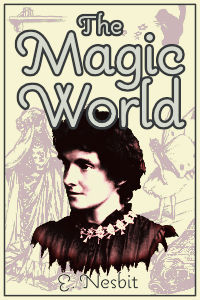
The Magic World
E Nesbit’s 1912 collection of stories for children includes “The Aunt and Amabel”, in which a young girl enters a magical world through a spare-room wardrobe (influencing C S Lewis’s The Lion, the Witch, and the Wardrobe).
Ebook version: 1.0. Last updated: 23 Oct 2019.
Source of this text: The Magic World (Gutenberg.org).
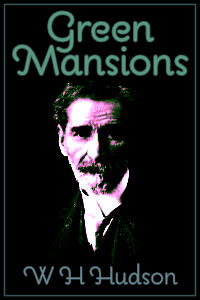
Green Mansions
Subtitled “A Romance of the Tropical Forest”, naturalist William Henry Hudson’s 1904 novel has been adapted as a radio opera, a comic, and as a film in 1959, starring Audrey Hepburn as the “jungle girl” Rima.
Ebook version: 1.2. Last updated: 12 Feb 2020.
Source of this text: Green Mansions (Gutenberg.org), with checks against Green Mansions (Archive.org).
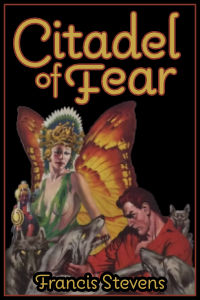
Citadel of Fear
Francis Stevens was the pseudonym of Gertrude M. Barrows, who wrote some pulpy fare between 1917 and 1923, including this lost-race/mad scientist novel, originally serialised in The Argosy in 1918.
The cover artwork is by Virgil Finlay, for a reprint of Stevens’ novel in Famous Fantastic Mysteries, February 1942.
Ebook version: 2.2. (minor textual edits, chapters XXI–XXXIII, which I missed out of version 1.0, and some corrections based on the Famous Fantastic Mysteries reprint) Last updated: 19 April 2019.
Source of this text: Citadel of Fear (Archive.org).
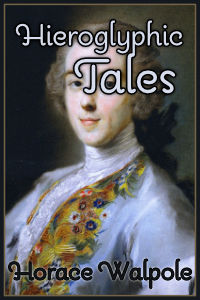
Hieroglyphic Tales
This short collection of six tales, grounded in the era’s enthusiasm for fairy tales and The Arabian Nights, was published privately in a small edition by Horace Walpole in 1785. Best known for his Gothic novel The Castle of Otranto (1764), these stories show a very different side to the 4th Earl of Orford, being gleefully nonsensical and satirical rather than dark and gloomy.
Ebook version: 1.1. (some textual corrections) Last updated: 5 Jan 2021.
Source of this text: Hieroglyphic Tales (Gutenberg.org), with edits based on this facsimile edition, Hieroglyphic Tales (Archive.org).
Weird & Ghostly
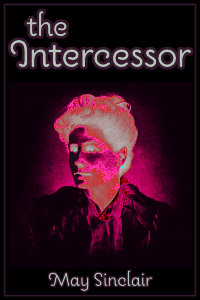
The Intercessor
May Sinclair’s 1911 novella of a haunting in a remote Yorkshire house is perhaps her best ghost story. Sinclair (1863–1946) was an established writer by the time of the Modernists, but was included among their number (being published in T S Eliot’s magazine The Criterion). She also combined an interest in early-20th century psychoanalysis with a membership of the Society for Psychical Research.
Ebook version: 1.0. Last updated: 28 Mar 2019.
Source of this text: scanned & converted.
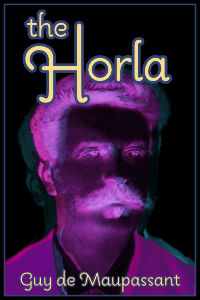
The Horla
Guy de Maupassant's classic horror/science fictional novella, in which an invisible, perhaps extra-planetary being preys on a narrator who begins to doubt his sanity. It was first published (in French) in 1887. I can't find the name of the translator of this English version, which was published as part of de Maupassant's complete works in 1909, but it soon made its way into countless anthologies of horror and the macabre.
Ebook version: 1.1. Last updated: 3 Apr 2019.
Source of this text: The Works of Guy de Maupassant, Vol. 1, 1909 (Gutenberg).
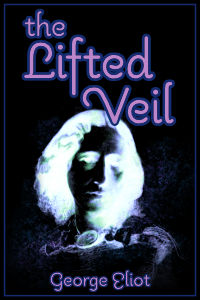
The Lifted Veil
Written between her first two novels (Adam Bede (1859) and The Mill on the Floss (1860)), this is George Eliot’s rare foray into the supernatural, touching on psychic abilities in her troubled protagonist. It was first published in Blackwood’s Edinburgh Magazine.
Ebook version: 1.1. Last updated: 3 Mar 2019.
Source of this text: The Lifted Veil (Gutenberg.org).
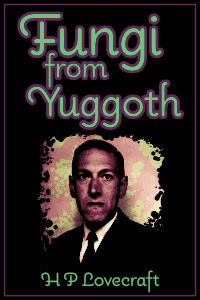
Fungi from Yuggoth & The Nightmare Lake
H P Lovecraft’s cycle of 36 sonnets, plus one other, longer poem.
The Fungi from Yuggoth were mostly composed between December 1929 and January 1930. At the start, the sonnets seem to be telling a single story about the discovery of a weird book, but soon turn into individual Lovecraftian story ideas. The Nightmare Lake was first published in The Vagrant in 1919.
Ebook version: 1.0. Last updated: 16 Feb 2019.
Source of this text: Fungi from Yuggoth (Wikisource) and The Nightmare Lake (Wikisource).
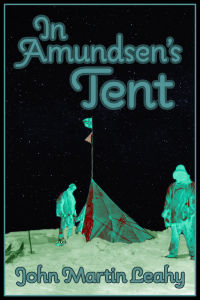
In Amundsen’s Tent
John Martin Leahy’s pre-Mountains of Madness tale of Antarctic horror was first published in Weird Tales in January 1928. Ramsey Campbell has called it “the great shaggy dog story of the [horror] field”.
Ebook version: 1.1. Last updated: 20 Jun 2019.
Source of this text: In Amundsen‘s Tent (Famous (and forgotten) Fiction), with checks & corrections from scans of the Weird Tales appearance.

The Yellow Wall Paper
First published in The New England Magazine in January 1892, Gilman’s story of psychological breakdown and hallucination is considered a key work of feminist literature, as well as an important story in the formation of the weird as a genre. H P Lovecraft praised it for “subtly delineating the madness which crawls over a woman dwelling in the hideously papered room where a madwoman was once confined”, in his essay “Supernatural Horror in Literature”.
Ebook version: 1.1. Last updated: 8 Feb 2020.
Source of this text: The Yellow Wall Paper (Wikisource), with checks and corrections from Archive.org versions of the text.
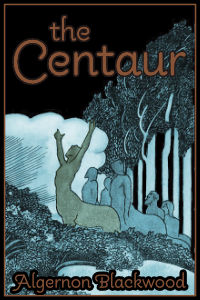
The Centaur
Algernon Blackwood’s novel of nature-mysticism. Some think it’s his best. Certainly, it’s one of his most personal statements. The cover is taken from the frontispiece to the first edition, drawn by W Graham Robertson.
Ebook version: 1.3. Last updated: 16th Jun 2020.
Source of this text: The Centaur (Gutenberg.org), with checks and corrections from The Centaur (scan at Archive.org).

Nightmare Tales
Helena Petrovna Blavatsky is most well-known as the founder of Theosophy, and as the author of such foundational works of 19th century occultism as Isis Unveiled (1877) and The Secret Doctrine (1888). Many of her ideas were taken up, playfully or seriously, by weird fiction writers including Clark Ashton Smith and H P Lovecraft. Nightmare Tales (1907) collected some of her own weird stories, written between 1876 and 1891, and revised in the final months of her life. Although most are about non-believers in the supernatural getting their comeuppance, the final tale, “The Ensouled Violin”, is genuinely ghoulish, and works the best of those collected here as a purely weird tale.
Ebook version: 1.1. Last updated: 30th Mar 2021.
Source of this text: Nightmare Tales (Gutenberg.org), with corrections from Nightmare Tales (scan at Archive.org), plus a few edits of obvious errors; other tales from The Theosophical Society.

By One, By Two, and By Three
Adrian Ross was the pen-name of Arthur Reed Ropes, a Cambridge Don (and colleague of M R James), who swapped his academic career for one as a lyricist of stage musicals. He wrote one weird novel, The Hole of the Pit (1914), and one weird story, “By One, By Two, and By Three”, which was first published anonymously in Temple Bar magazine in 1887, and later reprinted as by “Stephen Hall”. It was only later in the 20th century that the author of The Hole of the Pit and this story were identified as being the same man.
Ebook version: 1.0. Last updated: 23rd Feb 2021.
Source of this text: By One, By Two, and By Three in Temple Bar (Archive.org), with edits.
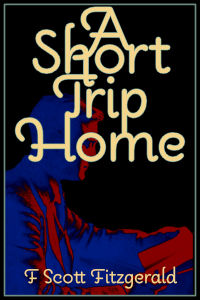
A Short Trip Home
F. Scott Fitzgerald’s ghost story, first published in The Saturday Evening Post, 17 December 1927, and later collected in Taps at Reveille (1935). I first heard of this story because William Burroughs recommended it in a talk on “Creative Reading” (at Archive.org) — after which I couldn't help but picture the “hard thin-faced man of about thirty-five with an air of being scarred, and a slight sinister smile” in the story as Burroughs...
Ebook version: 1.1. Last updated: 1st Apr 2021.
Source of this text: A Short Trip Home (Gutenberg Australia), with checks using Taps at Reveille (Archive.org).
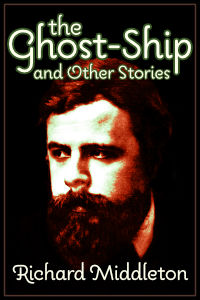
The Ghost-Ship and Other Stories
By the time this collection was published in 1912, Richard Middleton (1882–1911) was dead, but his work was championed by his friends (among them Arthur Machen, who provided a preface for The Ghost-Ship), ensuring volumes of his poetry, journalism, and short stories were issued, even though he had never had a book published during his life. The Ghost-Ship and Other Stories collects his few pieces of horror and weird fiction, along with other poetic and aesthetic tales (including two autobiographical pieces, “A Drama of Youth” and “The New Boy”). It was later reprinted by Victor Gollancz as part of their Rare Works of Imaginative Fiction series in 1964, alongside David Lindsay’s first two novels, and E H Visiak’s Medusa.
Ebook version: 1.1. Last updated: 12th May 2021.
Source of this text: The Ghost-Ship and Other Stories (Gutenberg), with checks and corrections using a scanned version from Archive.org.
Non-fiction
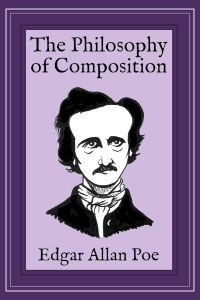
The Philosophy of Composition
Poe’s essay on how he reasoned his way into writing his celebrated poem The Raven.
Ebook version: 1.1. Last updated: 6th Oct 2019.
Source of this text: The Philosophy of Composition (Wikisource).
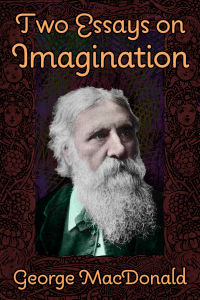
Two Essays on Imagination
“The Fantastic Imagination”, in which MacDonald tries to define what a fairy tale is, was originally written as the introduction to a collection of MacDonald's fairy tales, The Light Princess and Other Fairy Tales in 1893. “The Imagination, its Functions and its Culture”, a longer essay justifying imagination as an essential part of an education, was first published in 1867.
Ebook version: 1.1. Last updated: 20 Jun 2019.
Source of this text: A Dish of Orts (Gutenberg).
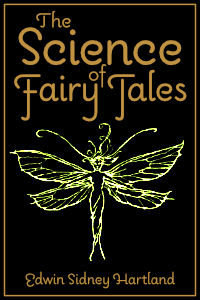
The Science of Fairy Tales
Guillermo del Toro has cited Edwin Sidney Hartland’s 1891 study The Science of Fairy Tales, subtitled “An Inquiry Into Fairy Mythology”, as an influence on his 2006 film, Pan’s Labyrinth. Hartland’s aim was to apply “the principles and methods which guide investigations into popular traditions to a few of the most remarkable stories embodying the Fairy superstitions of the Celtic and Teutonic peoples”, at a time when the study of folklore and myth was undergoing something of a revolution, most notably in Frazer’s examination of the roots of myth, The Golden Bough.
Ebook version: 1.0. Last updated: 6 Nov 2019.
Source of this text: The Science of Fairy Tales (Gutenberg), and The Science of Fairy Tales (Archive.org).
Outsider Documents
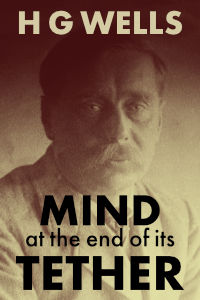
Mind at the End of its Tether
The last book Wells published in his lifetime, written as a refutation of his previous optimistic stance, but reading more like the lashing out of a disappointed and despairing man at a world that refused to develop as he expected it to. Brief summaries of recent scientific findings alternate with assertions that “the writer” (as Wells refers to himself) has become aware of a change in things for the worse — a change he neither explains nor justifies. Interesting mainly as an “Outsider Document”, i.e., one of those cited by Colin Wilson in his 1950 survey of alienated souls, The Outsider.
Ebook version: 1.1. Last updated: 28th August 2020.
Source of this text: Mind at the End of its Tether (Archive.org).

The Secret Life
Harley Granville-Barker (1877–1946) was an actor, playwright, theatre director and critic, whose play The Secret Life was written after Granville-Barker’s retirement, published in 1923, but not performed until decades after his death. He had a close association with George Bernard Shaw, leading at one time to idle speculation he was Shaw’s son. Criticised for having “no clear centre of dramatic interest”, The Secret Life, with its air of post-World War I nihilism, was examined by Colin Wilson in the second chapter of The Outsider, “World Without Values”.
Ebook version: 1.1. Last updated: 17th April 2021.
Source of this text: The Secret Life (Archive.org).
Miscellaneous
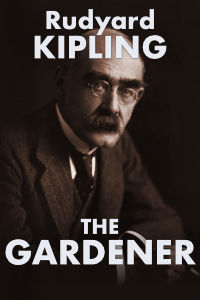
The Gardener
I heard about Rudyard Kipling’s short story “The Gardener” thanks to the Rest is History podcast’s 2021 Remembrance Day episode. First published in McCall’s Magazine in April 1925, it’s a low-key but powerful tale of mourning in the face of the First World War’s incredible death toll.
Ebook version: 1.1. Last updated: 27th Novemeber 2021.
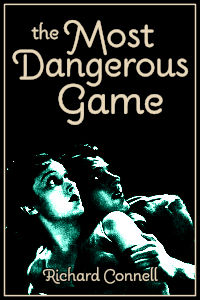
The Most Dangerous Game
The source for the 1932 film of the same name (which was filmed in parallel with the original King Kong, using the same sets and some of the same actors), Connell’s story is a classic short adventure.
Ebook version: 1.1. Last updated: 10th May 2023.
Source of this text: Wikisource, with corrections from O. Henry Memorial Award: Prize Stories of 1924 (1925, Doubleday, Page & Co.) (Archive.org).
If you’ve found this page useful, consider buying me a Ko-fi. For more (though non-free) ebooks, see my Bookship publications site. You can also contact me if you want to engage my ebook and print-book creation services. Thanks!
